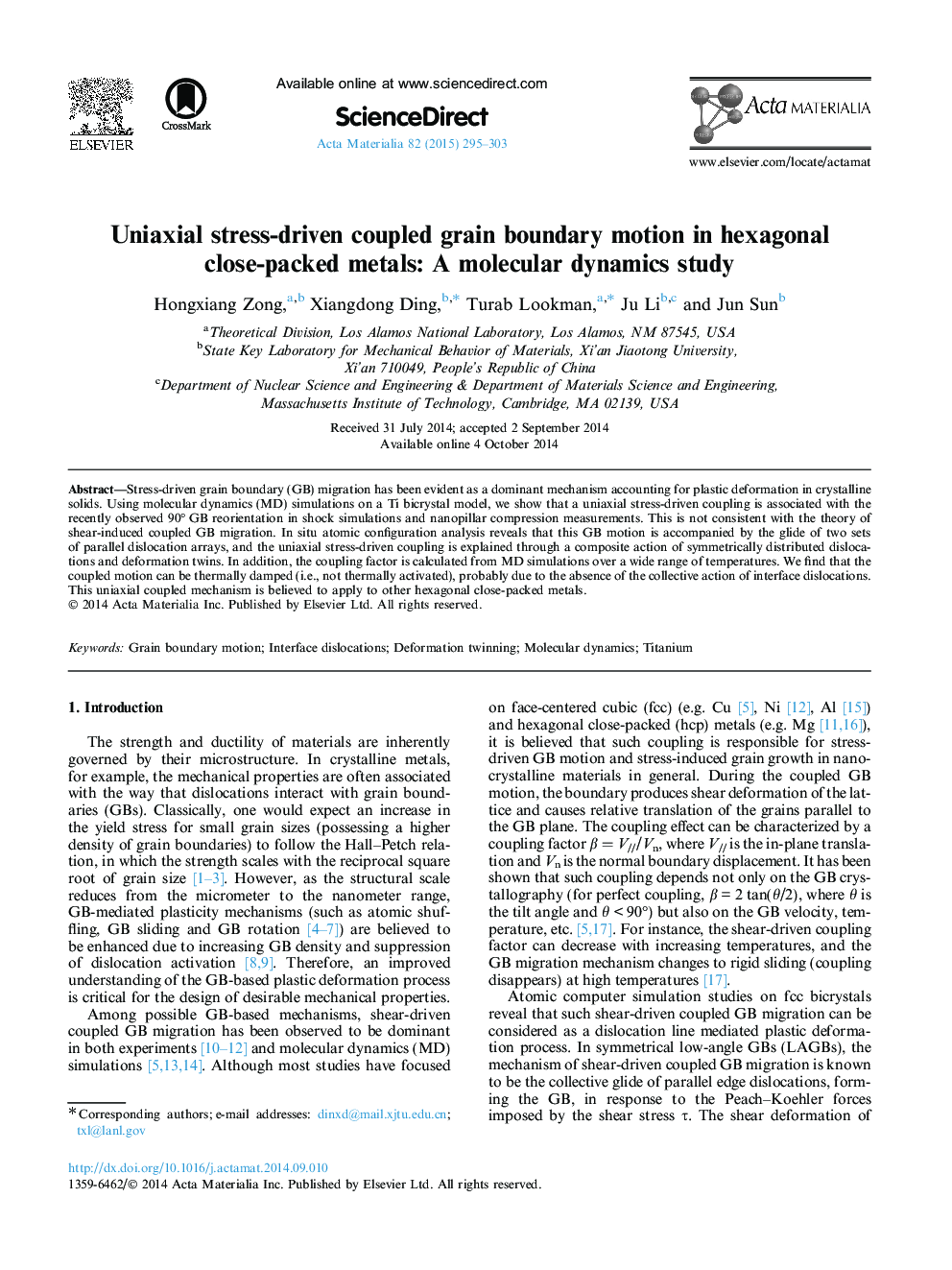| Article ID | Journal | Published Year | Pages | File Type |
|---|---|---|---|---|
| 1445524 | Acta Materialia | 2015 | 9 Pages |
Stress-driven grain boundary (GB) migration has been evident as a dominant mechanism accounting for plastic deformation in crystalline solids. Using molecular dynamics (MD) simulations on a Ti bicrystal model, we show that a uniaxial stress-driven coupling is associated with the recently observed 90° GB reorientation in shock simulations and nanopillar compression measurements. This is not consistent with the theory of shear-induced coupled GB migration. In situ atomic configuration analysis reveals that this GB motion is accompanied by the glide of two sets of parallel dislocation arrays, and the uniaxial stress-driven coupling is explained through a composite action of symmetrically distributed dislocations and deformation twins. In addition, the coupling factor is calculated from MD simulations over a wide range of temperatures. We find that the coupled motion can be thermally damped (i.e., not thermally activated), probably due to the absence of the collective action of interface dislocations. This uniaxial coupled mechanism is believed to apply to other hexagonal close-packed metals.
